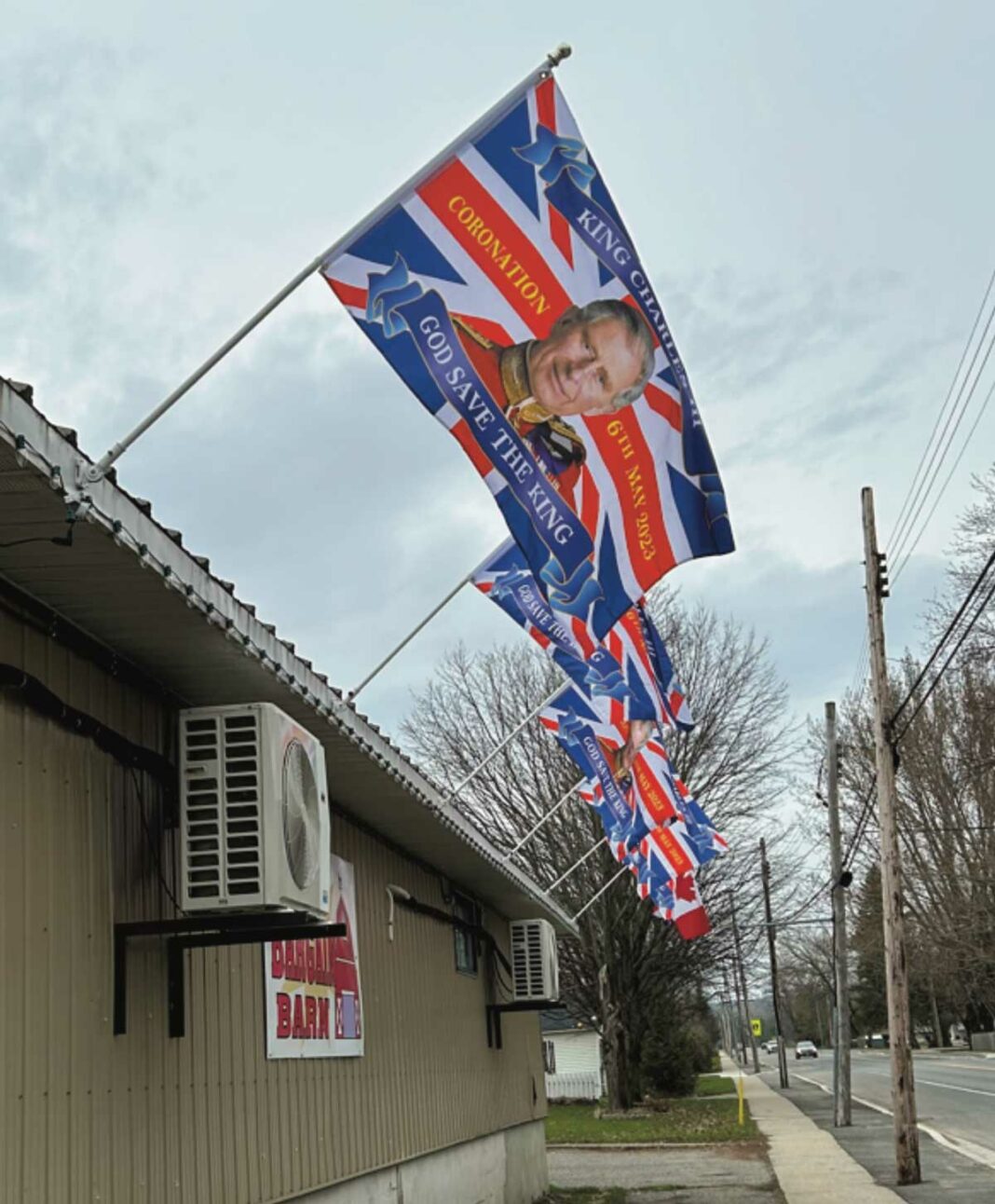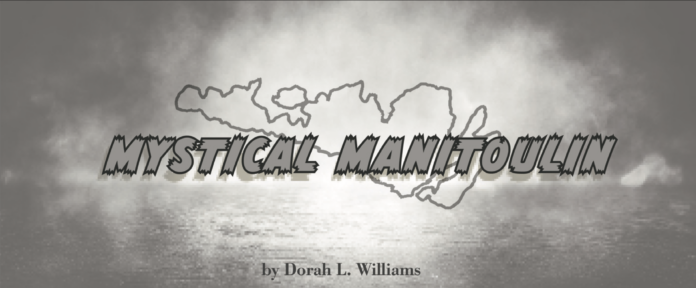LONDON—Few events more graphically demonstrate the changes that have taken place in Canadian society since the coronation of Queen Elizabeth II on June 2, 1953 as our nation’s reaction to her son Charles III’s elevation to the Crown scheduled to take place on May 6. Some seven decades on, Canada (well, Ontario at least), is much less a child of the British Empire today than it was back then.
One could easily have missed the news that King Charles III will succeed his mother on Saturday morning. Back in the day, that would have been impossible.
Rick McCutcheon, publisher emeritus of The Expositor, was attending a one-room schoolhouse in Vaughan at the time. “I was in Grade 2 at Mount Lebanon Public School SS#20 at the time, and my memory is that the preparations for the coronation seemed to consume the whole year,” he said. “I am pretty sure it was part of the school curriculum in Ontario at the time.”
It was definitely a different world, far apart from what school children experience today. “The school custodian (one of the Grade 8 boys) was in charge of pouring a pail full of water into the boys’ and girls’ chemical toilet,” recalled Mr. McCutcheon. “The water came from a pump in the schoolyard.”
Mr. McCutcheon’s father had just come into the house for his morning breakfast after the morning chores on their dairy farm when the news came on the radio that the king had died. “It must have been around 8 am in the morning and I was just getting ready to head out to school,” said Mr. McCutcheon. It was a one-mile jaunt on that gloomy overcast morning of Wednesday, February 6. “My father said, ‘the king is dead, long live the queen.’” Not fully comprehending what his father meant by the phrase, the grade schooler and future publisher repeated that same phrase at the end of class that day.
The following year was consumed by preparations for the coronation. “We all had coronation scrapbooks,” he recalled. Each week, Mr. McCutcheon would pore over the family’s magazines, such as the Star Weekly or flip through the pages of the Globe and Mail newspaper, looking for items to clip out.
“Our family was Northern Irish, loyal to the Crown (in fact, some of his ancestors were United Empire Loyalists), that’s white Anglo-Saxon Protestant—WASP,” said Mr. McCutcheon. “I have to think that the teacher would have been following her curriculum.”
The day of the coronation was one of great rejoicing for many school children—they got the day off.
In those days when “bandwidth” was measured by the size of a ship’s hold or the storage area of one of the new trans-Atlantic airplanes, the Canadian Broadcasting Corporation had made arrangements to fly the film of the coronation over to Canada and televised the event as soon as the film arrived.
“We were invited over to a cousin’s house in Toronto to watch the coronation as they had a television,” recalled Mr. McCutcheon. Unfortunately, the event proved to be something of a lunch bag letdown for the young viewer.
“I was expecting everything to be in colour like it was in the magazines,” said Mr. McCutcheon. “I thought it would be exciting. Instead, we watched a fuzzy picture on a tiny screen.” The room was filled with relatives who came to witness the historic occasion. “Talk about a letdown,” he laughed.
Mr. McCutcheon remarked that the atmosphere surrounding the coronation of Canada’s new monarch today lies a world apart from the 1950s.
Former Expositor staffer Esther Anstice, who now lives in London and is a verger at St. Paul’s Cathedral, won’t be watching the coronation live, despite being a short stone’s throw away from the live event. Although her church is not involved in the coronation, which takes place at the fabled Westminster Abbey, she will have her hands full that morning. “We have two weddings taking place that day,” she explained. “I will have to watch it later.”
“I have been in touch with my colleagues (at Westminster Abbey) and it will be quite a day for them,” she said. Even though the pomp and circumstance that will take place at the coronation of King Charles III is much reduced from that of his mother, it will still be a very busy time for those involved in the preparations at the church.
While the buzz around London is more noticeable than it is here in Canada, Ms. Anstice suggests it is much less so than it was seven decades ago. “This is a very different country than it was 70 years ago,” she said. “A very different country, a very different world, there different kinds of awareness (of Britain and the Crown’s past and impact on the world) and diversity. People are socially aware of many of the difficulties the British Empire brought to the world.” That awareness, she suggests, has tempered the monarchy’s approach to the coronation ceremonies.
“It has been trimmed down to two hours,” she said. “Different language, the common worship, it is much more accessible to the general public, there is an increased need for diversity in the service to make it a service for the people, rather than for the royal family.”
Ms. Anstice anticipates settling in with a couple of friends to watch the events after work.
St. Paul’s will be holding a special day of service that will include the royal family as part of the coronation vigil that runs from April 29 to May 8.
Meanwhile, the number of people coming into London is rising as coronation day draws near. “I think people just want to be here to feel the vibe and witness the event first-hand,” she suggested.
The coronation of their Majesties King Charles III and Queen Camilla will take place on Saturday, May 6.
The first procession will begin at 10:20 am London time (that’s 5:20 am Eastern Standard Time so royalists set your alarm clocks). Their Majesties will travel in procession from Buckingham Palace to Westminster Abbey along the ‘The King’s Procession.’ They will then travel in the Diamond Jubilee State Coach, drawn by six Windsor Grey horses with the Household Cavalry providing the Sovereign’s Escort.
The coronation service at Westminster Abbey itself is scheduled to begin at 11 am (6 am EST) and finish at 1 pm (8 am EST).
After the coronation service, their Majesties return to Buckingham Palace as part of a larger ceremonial procession known as ‘The Coronation Procession.’ The Coronation Procession will last for around 30 minutes wherein their Majesties will travel in the Gold State Coach, this time drawn by eight Windsor Grey horses.
The procession will arrive at Buckingham Palace at around 1:30 pm (8:30 am EST). Their Majesties will receive a salute from the United Kingdom and Commonwealth Armed Forces in the Buckingham Palace Gardens and will appear on the Buckingham Palace balcony for a ceremonial flypast.
While it would have been an almost unheard-of sentiment in the 1950s, support for ending the monarchy’s role in Canada has reached a slight majority since the death of Queen Elizabeth II. While a strong majority of Canadians believe she did a good job as monarch, the polls show a marked less confidence in her son.
Even in Britain, the rumblings of republicanism have risen since the Queen’s death. The scandals that have rocked the Royal Family over the past few years has played no small part in the drop in popularity for the aristocracy in general and the monarch in particular.





